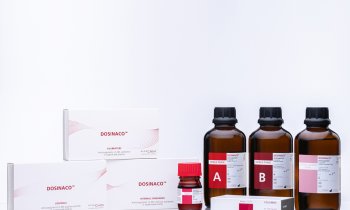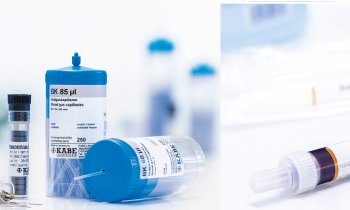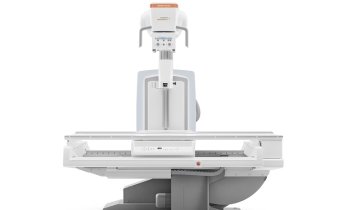Transcatheter aortic valve implants bear risks
Despite the lack of clinical evidence, surgeons have boldly charged into the younger population to routinely perform expensive and high-risk cardiac surgeries, John Brosky reports
Every year thousands of patients with less than one year to live are denied a heart valve replacement because they are too frail to undergo surgery. These patients tend to be over 75 years of age and suffering from multiple health problems, such as respiratory conditions that preclude general anaesthesia, end-stage failure of liver or kidneys, or a history of coronary surgery.
Two years ago they were offered a miracle and a chance to live another seven years.
Using minimally invasive techniques, the transcatheter aortic valve implants (TAVI) procedure enables a surgeon to place a new heart valve without cutting open a patient’s chest. However, the operation is not without risks, with a higher mortality rate than traditional surgery.
Yet the procedure was approved for use to offer those patients a second chance to live. That decision also created an opportunity for heart surgeons and heart valve manufacturers the chance to accumulate clinical evidence to prove safety and efficacy.
The argument became that if they could make their case by performing the surgery on the sickest of patients, then TAVI would have powerful proof that it is a safe alternative to replace traditional heart surgery with younger, stronger patients who also have a valve insufficiency. Instead of a few thousand patients annually, TAVI could then compete for the tens of thousands of heart valve procedures performed each year across Europe.
It turns out surgeons did not wait for the clinical evidence before boldly charging into the younger population. A registry compiled among 22 German heart centres in 2009, the first full year of TAVI practice, shows that, despite the dangers, a staggering 60% of the procedures were performed on patients considered at low risk. For these patients the dangers turn out to be a higher mortality rate and a strong chance of wearing a pacemaker.
Where mortality for open surgery to replace valves is around 2.3%, the German registry for 697 patients undergoing TAVI reported 12.4% mortality at 30 days.
The real world cost of the procedure and unproven devices are also an unknown at this experimental stage.
German health insurance funds reimburse the TAVI procedure at €35,000, yet a hidden cost incurred is the unexpected need for a permanent pacemaker implantation in 39.3% of patients receiving one of the devices, the CoreValve from Medtronic.
More than 84% of patients in the German registry received the CoreValve device. Pacemaker implants for patients receiving the only other approved device -- the Sapien valve from Edwards Lifesciences -- is around 8%.
‘TAVI is completely unregulated,’ acknowledged Payam Akhyari MD, from the Department of Cardiology, University of Düsseldorf Hospital, following his presentation of the German registry during the Medica 2010 Congress.
His presentation was the first since the registry was made public in May 2010, to disclose publicly the number of low-risk patients included in the data.
Including survival rates of the younger, lower risk patients in registries with the less attractive outcomes among the high-risk patients tends to skew data on device performance and may create a more positive picture for TAVI than if the results only included the originally targeted population.
Even while including a majority of patients with a risk score below the prescribed threshold, the German registry report dutifully includes a statement discouraging the use of TAVI for low-risk patients.
‘As there is as yet only limited experience in this field and neither randomised trials nor long-term-results are available, the use of new implantation techniques is therefore not recommended for younger patients or patients without comorbidities,’ the authors intone.
‘What we are seeing is of concern, because though this is called a real world registry,’ Dr Akhyari said, ‘actually less than one-fourth of the operations are recorded.’
His concern is shared by the professional cardiology societies charged with setting practice guidelines.
In an unusual joint position statement, the European Association of Cardiothoracic Surgery (EACTS), the European Society of Cardiology (ESC) and the European Association of Percutaneous Cardiovascular Interventions (EAPCI) warn of a ‘risk of uncontrolled diffusion.’
The joint panel stated: ‘TAVI should currently be restricted to patients at high-risk or with contraindications for surgery. It is premature to consider using it in patients who are good surgical candidates. At this stage, TAVI is not recommended for patients who simply refuse surgery on the basis of personal preference.’
Germany is not the only country in Europe to see a rapid adoption of TAVI and an accelerating trend to performing the procedure as an alternative to surgery among patients with a logistic Euroscore of less than 20.
Where 923 implants were reported in April, 2008, one year later that number jumped five-fold to more than 5,000 procedures, 95% of them in Europe where the two commercially available devices are approved for use.
In May, 2010, results from 3,000 procedures were reported by CoreValve in five national registries for Italy, the United Kingdom, Germany, Belgium and France, and the company said it had marked the implantation of 10,000 valves in 32 countries.
28.12.2010










